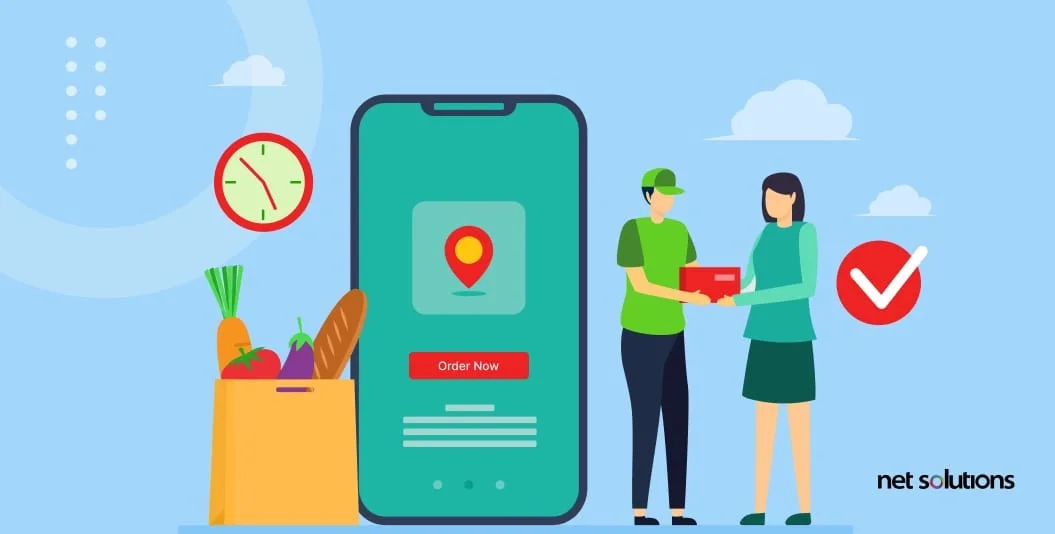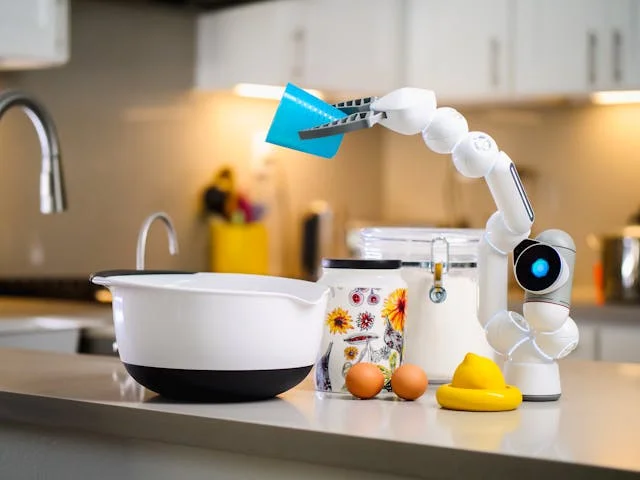The pizza delivery industry has seen significant growth and transformation with the rise of technology. With consumers increasingly turning to their smartphones to order food, pizza delivery apps have become essential for both pizza chains and independent pizzerias. In this article, we will explore the latest technology trends shaping pizza delivery app development, and discuss how these advancements are enhancing customer experiences and streamlining delivery processes.
1. Artificial Intelligence (AI) and Machine Learning
AI and machine learning are revolutionizing pizza delivery app development by enabling more personalized and efficient services. Here’s how:
- Personalized Recommendations: AI algorithms analyze user preferences and order history to offer personalized recommendations. This not only enhances the customer experience but also boosts sales through targeted upselling.
- Chatbots and Virtual Assistants: AI-powered chatbots handle customer inquiries, take orders, and provide real-time updates on delivery status. These virtual assistants operate 24/7, improving customer service and reducing the need for human intervention.
- Demand Forecasting: Machine learning models predict demand patterns based on historical data, weather conditions, and local events. This helps pizzerias optimize inventory management and staffing levels, reducing waste and improving service efficiency.
2. Real-Time Order Tracking
Real-time order tracking has become a staple feature in modern pizza delivery apps. Utilizing GPS and mapping technologies, these features offer:
- Live Tracking: Customers can track their orders in real-time, from the kitchen to their doorstep. This transparency builds trust and reduces customer anxiety about delivery times.
- Driver Optimization: GPS technology helps delivery drivers find the most efficient routes, minimizing delivery times and fuel consumption. This is particularly valuable in urban areas with heavy traffic.
- Automated Notifications: Automated push notifications keep customers informed about their order status, estimated delivery time, and any delays. This enhances the overall customer experience and helps manage expectations.
3. Contactless Payments
The demand for secure and convenient payment methods has accelerated the adoption of contactless payments in pizza delivery apps. Key trends include:
- Digital Wallets and Mobile Payments: Integration with digital wallets like Apple Pay, Google Wallet, and PayPal allows customers to make payments quickly and securely through their smartphones.
- In-App Payments: Streamlined in-app payment systems reduce friction during the checkout process, leading to higher conversion rates and fewer abandoned carts.
- Cryptocurrency: Some forward-thinking pizza delivery apps are experimenting with cryptocurrency payments, offering a new level of convenience and security for tech-savvy customers.
4. Augmented Reality (AR) and Virtual Reality (VR)
AR and VR technologies are being used creatively in pizza delivery apps to enhance user engagement and provide immersive experiences:
- AR Menus: Augmented reality allows customers to visualize pizzas and other menu items in 3D before placing an order. This helps users make informed choices and increases the likelihood of order completion.
- VR Ordering Experience: Virtual reality can create immersive ordering experiences, such as virtual tours of the pizzeria’s kitchen or interactive menu displays. While still emerging, VR has the potential to revolutionize how customers interact with pizza delivery apps.
5. Internet of Things (IoT)
IoT is transforming how pizza delivery services operate by connecting various devices and systems:
- Smart Appliances: IoT-enabled kitchen appliances can communicate with delivery management systems to streamline order preparation and monitoring. For example, smart ovens can alert staff when a pizza is ready for delivery.
- Inventory Management: IoT sensors track inventory levels and product freshness, enabling automated reordering and reducing waste. This ensures that pizzerias always have the necessary ingredients on hand.
- Delivery Fleet Management: IoT devices in delivery vehicles provide real-time data on vehicle conditions, driver behavior, and route efficiency. This helps optimize fleet management and improve overall delivery performance.
6. Enhanced User Interfaces (UI) and User Experiences (UX)
A well-designed user interface and user experience are crucial for the success of a pizza delivery app. Key trends in UI/UX design include:
- Simplified Navigation: Intuitive navigation and streamlined menus make it easier for users to browse, customize, and order their favorite pizzas. Clear and concise design elements enhance the overall user experience.
- Voice Command Integration: Voice-enabled features allow users to place orders and interact with the app using voice commands. This hands-free approach caters to busy customers and improves accessibility.
- Customization Options: Advanced customization options let users tailor their pizza orders to their specific preferences, including crust type, toppings, and dietary restrictions. This personalization enhances user satisfaction and loyalty.
7. Big Data Analytics
Big data analytics provides valuable insights that can drive business decisions and improve app performance:
- Customer Insights: Analyzing customer data helps pizzerias understand purchasing behaviors, preferences, and trends. This information can be used to develop targeted marketing strategies and promotional offers.
- Operational Efficiency: Data analytics identifies inefficiencies in the delivery process, such as slow delivery times or high rates of order errors. Addressing these issues improves overall service quality and customer satisfaction.
- Marketing Optimization: Big data tools track the effectiveness of marketing campaigns and promotions, allowing businesses to refine their strategies and maximize return on investment.
8. Sustainability and Eco-Friendly Practices
As environmental concerns grow, pizza delivery apps are adopting sustainable practices to appeal to eco-conscious customers:
- Eco-Friendly Packaging: Many pizzerias are switching to biodegradable or recyclable packaging materials to reduce their environmental impact.
- Green Delivery Options: Some delivery services offer eco-friendly delivery options, such as electric scooters or bikes, to minimize carbon emissions.
- Waste Reduction: Technology helps track and manage food waste more effectively, leading to more efficient use of resources and reduced environmental impact.
Conclusion
The pizza delivery industry is undergoing a technological transformation driven by advancements in AI, real-time tracking, payment solutions, and more. By integrating these technologies, pizza delivery apps are enhancing customer experiences, streamlining operations, and setting new standards for convenience and efficiency. As the industry continues to evolve, staying abreast of these trends will be crucial for businesses looking to remain competitive in the ever-growing market of pizza delivery app development.
Whether you’re a pizza chain looking to upgrade your delivery app or a startup entering the market, understanding these technology trends will help you build a robust and successful pizza delivery app. For companies specializing in delivery app development, including those in the grocery delivery sector, embracing these innovations can lead to significant improvements in service quality and customer satisfaction.








